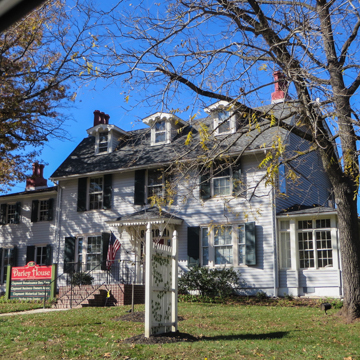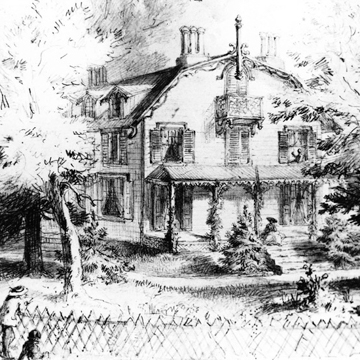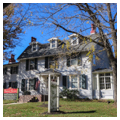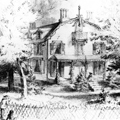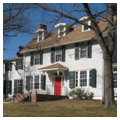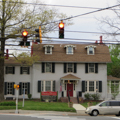Philadelphia-born Felix Darley, America's first important book illustrator, drew pictures for volumes by James Fenimore Cooper, Nathaniel Hawthorne, Washington Irving, Edgar Allan Poe, and others. Upon marrying in 1859, he and Jane Colburn moved to this house along the post road. Darley thereby escaped urban nuisances, yet was within easy train distance of Philadelphia, New York, and Boston. Unsubstantiated local legend says that author Charles Dickens visited him here. As shown in a sketch by Darley, the gambrel-roofed frame house originally had a veranda on the side, an additional window above it, and a door leading to a quaint balcony on the third floor. Gone, too, are the Gothic Revival moldings over the windows. The vacant house was restored in 1991–1992 as a bed-and-breakfast. Next door stands the Church of the Ascension (Episcopal; 1851–1854, Samuel Sloan), built across the road from its current site and moved in 1927, when a stone addition was built. Its facade was reconstructed in 1949. West of the Darley House is Claymont Stone School (1805; enlarged 1905), threatened with demolition in 1987, but subsequently restored (Jim Nelson, architect).
You are here
Darley House
If SAH Archipedia has been useful to you, please consider supporting it.
SAH Archipedia tells the story of the United States through its buildings, landscapes, and cities. This freely available resource empowers the public with authoritative knowledge that deepens their understanding and appreciation of the built environment. But the Society of Architectural Historians, which created SAH Archipedia with University of Virginia Press, needs your support to maintain the high-caliber research, writing, photography, cartography, editing, design, and programming that make SAH Archipedia a trusted online resource available to all who value the history of place, heritage tourism, and learning.















